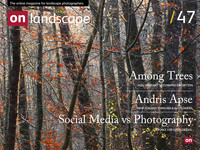Book review

Peter Cook
Surrey Photographer who's had a life long love affair with the British landscape, mountains and water.
I first read Joe Cornish’s First Light about 7 years ago and it had a dramatic effect on my photography. First Light is not - as you might think - about the light first thing in the morning but about the light coming first. This could be first thing in the morning or the evening or infact any time of the day, but what is important is the quality of the light. The book is split into 7 chapters with each one having a theme, and has a forward by Charlie Waite.
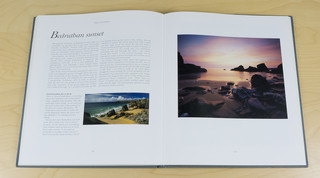
Each chapter has an introductory page followed by double page spreads for each location. The right hand page always has a full page photograph of the location and the left hand page is split into two parts. The top half has text to accompany the main image and information about the location and below this is a smaller image of the same location that Joe feels did not quite work along with an explanation of why. At the back is the technical information for each image with a small thumbnail to identify each image. There are a total of 160 pages and 63 of Joes photographs are produced in the full page spreads.
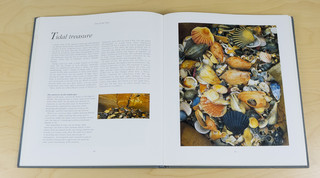 The photographs are all reproduced to a high standard and the writing is done in a way that makes it very enjoyable to read, including as it often does, how Joe was feeling and how much effort he puts into the resulting image. In one example, an image taken at Mewslade on the Gower Peninsula of South Wales, Joe tells us how he only just made it back to the main beach after wading through the oncoming tide, water filling his boots, feeling exhausted, relieved and exhilarated! Its the sort of writing that is rare in that it is both entertaining and educational. As you read you build up an insight into the man’s character and his approach to his photography, into his values and goals. In chapter 6 ‘Days of Wonder’ he states it clearly “I intend to make images that are real, beautiful, and natural. I strive to be a faithful witness......” in the preceding chapters these values shine through but its only in introduction to the last chapter that he lays it down so clearly. In chapter 7 ‘Friends and heroes’ he pays homage in the images and text to (not unsurprisingly) his friends and heroes, and as I am sure Joe himself falls into the ‘Hero’ category for many photographers its interesting to know that heroes have heroes.
The photographs are all reproduced to a high standard and the writing is done in a way that makes it very enjoyable to read, including as it often does, how Joe was feeling and how much effort he puts into the resulting image. In one example, an image taken at Mewslade on the Gower Peninsula of South Wales, Joe tells us how he only just made it back to the main beach after wading through the oncoming tide, water filling his boots, feeling exhausted, relieved and exhilarated! Its the sort of writing that is rare in that it is both entertaining and educational. As you read you build up an insight into the man’s character and his approach to his photography, into his values and goals. In chapter 6 ‘Days of Wonder’ he states it clearly “I intend to make images that are real, beautiful, and natural. I strive to be a faithful witness......” in the preceding chapters these values shine through but its only in introduction to the last chapter that he lays it down so clearly. In chapter 7 ‘Friends and heroes’ he pays homage in the images and text to (not unsurprisingly) his friends and heroes, and as I am sure Joe himself falls into the ‘Hero’ category for many photographers its interesting to know that heroes have heroes.
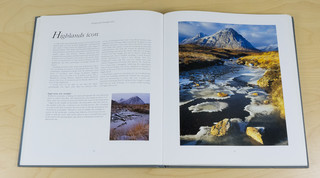 As this book was published in 2002 and at this time I believe Joe had yet to make the move to digital, all the photographs are taken on film (mainly Velvia) now as far as I can make out from Joes contributions to OnLandscape he now shoots much more with digital backs, so the small section covering his equipment is perhaps a little bit out of date to what he uses now, but all of the advice and principles are still very valid today. I think the point is no matter what equipment you have the foundations and principles remain the same.
As this book was published in 2002 and at this time I believe Joe had yet to make the move to digital, all the photographs are taken on film (mainly Velvia) now as far as I can make out from Joes contributions to OnLandscape he now shoots much more with digital backs, so the small section covering his equipment is perhaps a little bit out of date to what he uses now, but all of the advice and principles are still very valid today. I think the point is no matter what equipment you have the foundations and principles remain the same.
I found that when I had finished reading it I had not only enjoyed the reading and the viewing of the photography, but without realising it I had become a better photographer, because I now just seemed to automatically push myself more, look harder, work harder and think more about my photography. No other book I have read has had that effect on me.
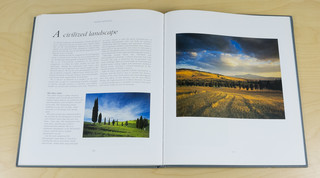 At this point I thought it would be nice to share with you how I spent four mornings on the beach at Bamburgh on the Northumberland coast, seeing different light, enjoying different light and just enjoying being out in the landscape and perhaps because of the influence of Joe’s book I ended up with what has become one of my favourite photographs.
At this point I thought it would be nice to share with you how I spent four mornings on the beach at Bamburgh on the Northumberland coast, seeing different light, enjoying different light and just enjoying being out in the landscape and perhaps because of the influence of Joe’s book I ended up with what has become one of my favourite photographs.
So last September my wife and I headed off to Northumberland for the first time, partly because we have always wanted to, partly the beaches are great for dogs and we have a German Shepherd and partly (or mostly if you ask me when my wife is not listening) for the photography. We stayed near Bamburgh on the edge of Budle Bay.
All of the images below were taken in RAW format and I kept the processing at defaults (Canon DPP) as I wanted to show them as close to the same settings as I could as I thought that might be more meaningful, hence some of the colours are a bit off as I have not adjusted the white balance or anything else.
My first morning down on the beach at Bamburgh resulted in the following photograph.
I chose the morning for Bamburgh because of its location on the east coast makes the morning light is particularly good and this is what I chose to explore.
This was my first morning and the light was pleasing, I liked the foreground rock and the sea (unfortunately for me, like Joe, I also filled my welly boots with sea water while shooting!) but though I like the result the sky could be more interesting. It was however a good start.
The next morning produced the following photograph.
Again the sky is interesting but with no cloud to speak of its not that great. The positioning is perhaps not as good as the first shot, and I knew overall it could be better. As the level of the tide changed each morning needed some scouting about to find an interesting position to plant the tripod legs. On this occasion I don't think I succeeded with this either.
The third visit resulted in this photograph, this was 6 days after the second shot as I was also exploring other places on other mornings.
On this morning, as you can see, the light was not very interesting and the result is fairly uninspiring.
The following morning saw my fourth visit and this time everything came together in a very special morning. Again I got down to the beach at about 6:00 and found a good location. Things were looking promising, I had a feeling it might be a good morning. It was, the sky and light just got better and better, I remember thinking that it could not get any better and it just kept improving until that is the sun fully appeared and it all normalised. It left me feeling elated and full of joy that I had just simply been there to witness it. The resulting image is shown below.
Perhaps in an ideal world I would have would have prefered the light and sky of this image and the tide and camera position of the first image, but as we have no control over the tides and the light I am happy with this final image. I thought about a photographer I had spoken to the previous morning. He told me that he and his wife were off to Scotland that day and he had spent several mornings, like me, at Bamburgh and he felt he had not produced anything that he was very happy with, so he had missed this morning. It brought home how much luck there can be when it comes to light, though your chances of getting some luck can be improved with patience and perseverance.
First Light is a book that every landscape photographer should own, it not only contains some beautiful photographs it also has some wonderful writing. It is not a technique driven book but more of a guide to firstly understanding how a photographer works and how he thinks and secondly its a guide to learning more about light and perhaps most importantly understanding the profound influence light has on your photography.

